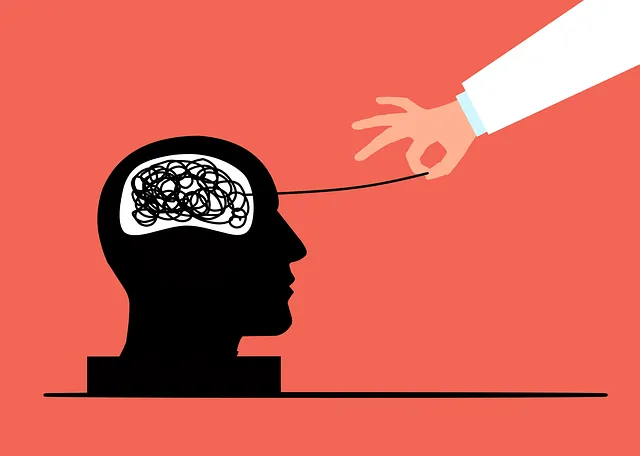The media's portrayal of mental health significantly shapes public perception, either positively or negatively. Organizations like the Kaiser Permanente mental health facility in Parker play a vital role by promoting initiatives to counteract negative media coverage. Through programs focusing on crisis intervention, self-awareness exercises, and emotional well-being promotion, they aim to create more empathetic narratives about psychiatric conditions. Kaiser Permanente, as a leading healthcare provider, is committed to destigmatizing mental illness through media representation and public awareness campaigns, offering comprehensive care at their Parker facility and empowering individuals through inner strength development and self-esteem improvement.
Mental illness representation in media significantly influences public perception and understanding. This article explores strategies to challenge negative stereotypes, focusing on innovative solutions like Kaiser Permanente’s initiatives for positive mental health promotion. We highlight the success of the Parker Mental Health Facility, showcasing its impact on community well-being. Additionally, we discuss enhancing media accuracy in depicting mental illnesses, emphasizing the importance of responsible storytelling. By examining these approaches, we aim to foster more empathetic and informed societies.
- Understanding the Impact of Media Portrayal on Mental Health Perception
- Kaiser Permanente's Approach to Promoting Positive Mental Health Representation
- The Parker Mental Health Facility: A Real-World Solution and its Impact
- Strategies for Enhancing Media Accuracy in Depicting Mental Illnesses
Understanding the Impact of Media Portrayal on Mental Health Perception

Media representation plays a pivotal role in shaping public perceptions about mental health, often influencing how individuals understand and respond to various psychiatric conditions. The way mental illness is depicted in films, television shows, and news media can either perpetuate stereotypes or offer more nuanced insights, potentially affecting the audience’s empathy and support for those struggling with their mental well-being. For instance, a positive portrayal of recovery at a renowned facility like Kaiser Permanente mental health facility in Parker could inspire hope and encourage individuals to seek help.
On the contrary, negative or inaccurate media coverage can lead to increased stigma, fear, or misunderstanding. This is where organizations and professionals step in with initiatives such as Crisis Intervention Guidance, Self-Awareness Exercises, and Emotional Well-being Promotion Techniques to counteract these effects. By actively engaging with media platforms and providing factual information, they can steer the narrative towards a more empathetic and informed society.
Kaiser Permanente's Approach to Promoting Positive Mental Health Representation

Kaiser Permanente, a renowned healthcare organization, has taken a proactive approach to promoting positive mental health representation in media and society at large. Their strategy focuses on challenging stereotypes often associated with mental illness while fostering understanding and empathy. At their core, Kaiser Permanente’s efforts are driven by the belief that destigmatization begins with accurate portrayal and representation of individuals living with various mental health conditions.
Through its state-of-the-art mental health facilities, such as the one located in Parker, Kaiser Permanente provides comprehensive care and support to patients. Additionally, they invest heavily in developing public awareness campaigns that highlight stories of resilience and recovery. These campaigns emphasize the concept of Inner Strength Development, encouraging individuals to recognize their inherent capabilities for overcoming challenges related to mental health. Further, by shedding light on Self-Esteem Improvement as a crucial aspect of healing, Kaiser Permanente empowers patients to embrace their true selves and embark on journeys of personal growth.
The Parker Mental Health Facility: A Real-World Solution and its Impact

The Parker Mental Health Facility, operated by Kaiser Permanente, stands as a beacon of hope and a practical solution to addressing mental illness representation in media. This facility offers a comprehensive approach to mental health care, challenging stereotypical depictions often found in popular culture. By providing a real-world model, Parker demonstrates the importance of accessible, compassionate, and evidence-based treatments for various mental health conditions.
The impact of such an initiative is profound. It not only empowers individuals facing depression or other mental health challenges but also fosters a culture of self-care routine development and compassion cultivation practices. The facility’s existence sends a powerful message that mental illness is a valid, treatable condition, encouraging open conversations and reducing the stigma associated with seeking help. This approach aligns with global efforts to prioritize mental well-being, ensuring folks receive the support they need in a non-stigmatizing environment.
Strategies for Enhancing Media Accuracy in Depicting Mental Illnesses

Media plays a significant role in shaping public perception about mental illnesses. To challenge stereotypes and promote understanding, media outlets must strive for accuracy and sensitivity when portraying individuals with mental health conditions. One way to enhance accuracy is by collaborating with healthcare providers, such as those at Kaiser Permanente mental health facilities, to ensure factual representation. These partnerships can offer insights into the nuances of various disorders and the latest treatments available.
Additionally, encouraging self-awareness exercises and cultural competency training for media professionals can foster a deeper understanding of mental health issues. By integrating these practices, media can create more nuanced and empathetic narratives that reflect the diverse experiences of individuals living with mental illnesses. This approach not only educates the public but also promotes anxiety relief by reducing stigma and misperceptions.
In conclusion, addressing the representation of mental illness in media is a pivotal step towards fostering understanding and reducing stigma. As highlighted by Kaiser Permanente’s initiatives and the success of the Parker Mental Health Facility, proactive approaches can significantly shape public perception. By implementing strategies to enhance media accuracy, we can ensure that storytelling accurately reflects the complexities of mental health struggles. These efforts collectively contribute to creating a more empathetic society, where individuals with mental illnesses are supported and treated with the dignity they deserve.






